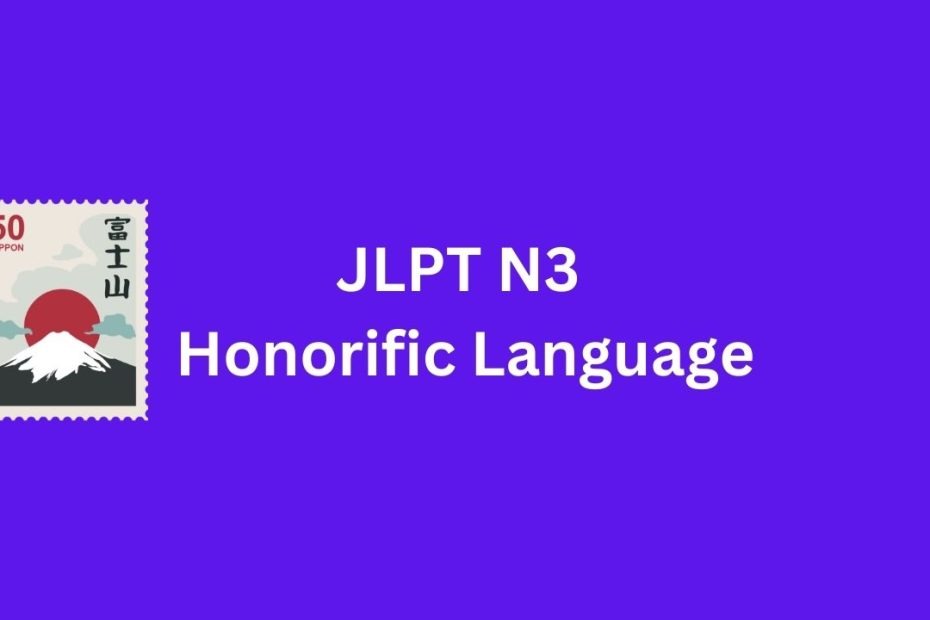Introduction:
Keigo, or polite language, is an essential aspect of Japanese communication. It is used to show respect, politeness, and formality in various social situations. Mastering keigo is crucial for professional and formal interactions.
Types of Keigo:
- Sonkeigo (尊敬語): Honorific language is used to show respect to others. It is often used when talking about actions or things related to the listener.
- Example:
- お会いする (おあいする) – to meet (honorific form)
- Example:
- Kenjougo (謙譲語): Humble language is used to humble oneself or one’s in-group. It is used when talking about actions or things related to oneself or one’s group.
- Example:
- 伺う (うかがう) – to ask, to visit (humble form)
- Example:
- Teineigo (丁寧語): Polite language is used in everyday communication to show respect without elevating or humbling the subject. It’s the standard polite language used in various situations.
- Example:
- お話しする (おはなしする) – to talk (polite form)
- Example:
Common Keigo Expressions:
- Verbs:
- いらっしゃる (irassharu) – to be, to come (honorific)
- おっしゃる (ossharu) – to say, to speak (honorific)
- なさる (nasaru) – to do (honorific)
- くださる (kudasaru) – to give (honorific)
- Nouns:
- お名前 (おなまえ, onamae) – your name (honorific)
- ご飯 (ごはん, gohan) – rice, meal (honorific)
- お手洗い (おてあらい, otearai) – restroom (honorific)
- Adjectives:
- おいしい (oishii) – delicious (honorific)
- きれい (kirei) – beautiful, clean (honorific)
- お元気 (おげんき, ogenki) – well, healthy (honorific)
- Examples:
- お名前を伺ってもよろしいですか? (May I ask for your name?)
- いらっしゃいませ! (Welcome!)
- お手洗いはどちらですか? (Where is the restroom?)
Sonkeigo (Honorific Language)
Introduction:
Sonkeigo (尊敬語) is a type of keigo (polite language) used in Japanese to show respect to others. It is applied when talking about actions or things related to the listener, their family, or their in-group. Sonkeigo is commonly used in business, formal settings, and customer service interactions.
Verb Conjugation:
To transform a verb into sonkeigo, you generally follow these rules:
- 五段動詞 (Godan Verbs):
- Remove the final -る: For example, 食べる (to eat) becomes 食べ.
- Replace -る with -いらっしゃいませんでした: Add the appropriate auxiliary verb. For example, 食べ becomes 食べいらっしゃいませんでした.
- 一段動詞 (Ichidan Verbs):
- Remove the final -る: For example, 飲む (to drink) becomes 飲.
- Replace -る with -いらっしゃいませんでした: Add the appropriate auxiliary verb. For example, 飲 becomes 飲いらっしゃいませんでした.
- する (to do):
- する becomes なさる.
- くる (to come):
- くる becomes いらっしゃる.
Common Sonkeigo Expressions:
- Verbs:
- なさる (nasaru) – to do (honorific)
- いらっしゃる (irassharu) – to be, to come (honorific)
- おっしゃる (ossharu) – to say, to speak (honorific)
- ござる (gozaru) – to be (used with nouns, archaic)
- Nouns:
- お名前 (おなまえ, onamae) – your name (honorific)
- お手洗い (おてあらい, otearai) – restroom (honorific)
- ご家族 (ごかぞく, gokazoku) – your family (honorific)
- Adjectives:
- おいしい (oishii) – delicious (honorific)
- きれい (kirei) – beautiful, clean (honorific)
- ご無事 (ごぶじ, gobuji) – safe, well (honorific)
Usage Tips:
- Know Your Audience: Use sonkeigo appropriately based on the status and familiarity of the person you’re addressing.
- Combine with Teineigo: Sonkeigo often combines with teineigo (polite language) to create well-rounded sentences.
- Practice Conjugations: Regular practice of verb conjugations is essential for mastering sonkeigo.
Examples:
- お名前をお伺いしてもよろしいでしょうか? (May I ask for your name?)
- お越しいただきありがとうございます。 (Thank you for coming.)
- ご家族の方はお元気でしょうか? (How is your family doing?)
Kenjougo (Humble Language)
Introduction:
Kenjougo (謙譲語) is a type of keigo (polite language) used in Japanese to humble oneself or one’s in-group. It is applied when talking about actions or things related to oneself, one’s group, or one’s organization. Kenjougo is commonly used in business, formal settings, and when discussing one’s own actions in a modest manner.
Verb Conjugation:
To transform a verb into kenjougo, you generally follow these rules:
- 五段動詞 (Godan Verbs):
- Remove the final -る: For example, 食べる (to eat) becomes 食べ.
- Replace -る with -いたします: Add the appropriate auxiliary verb. For example, 食べ becomes 食べいたします.
- 一段動詞 (Ichidan Verbs):
- Remove the final -る: For example, 飲む (to drink) becomes 飲.
- Replace -る with -いたします: Add the appropriate auxiliary verb. For example, 飲 becomes 飲いたします.
- する (to do):
- する becomes いたす.
- くる (to come):
- くる becomes まいります.
Common Kenjougo Expressions:
- Verbs:
- いたします (itashimasu) – to do (humble)
- まいります (mairimasu) – to come (humble)
- 申し上げる (もうしあげる, moushiageru) – to say, to give (humble)
- 存じる (ぞんじる, zonjiru) – to know (humble)
- Nouns:
- 申し訳ございません (もうしわけございません, moushiwake gozaimasen) – I’m sorry (very humble)
- いただく (itadaku) – to receive, to eat (humble)
- Adjectives:
- ありがたい (arigatai) – grateful (humble)
- 小さな (ちいさな, chiisana) – small (humble)
Usage Tips:
- Appropriate Humility: Use kenjougo appropriately based on the context and your relationship with the listener.
- Combine with Teineigo: Kenjougo often combines with teineigo (polite language) to create well-rounded sentences.
- Avoid Overuse: While humility is valued, excessive use of kenjougo may seem overly self-deprecating.
Examples:
- 申し訳ございません、遅くなってしまいました。 (I’m terribly sorry for being late.)
- いただきます (before a meal). (I will receive this meal.)
- 存じております、お手間をおかけして申し訳ございません。 (I understand, and I’m terribly sorry for causing you trouble.)
